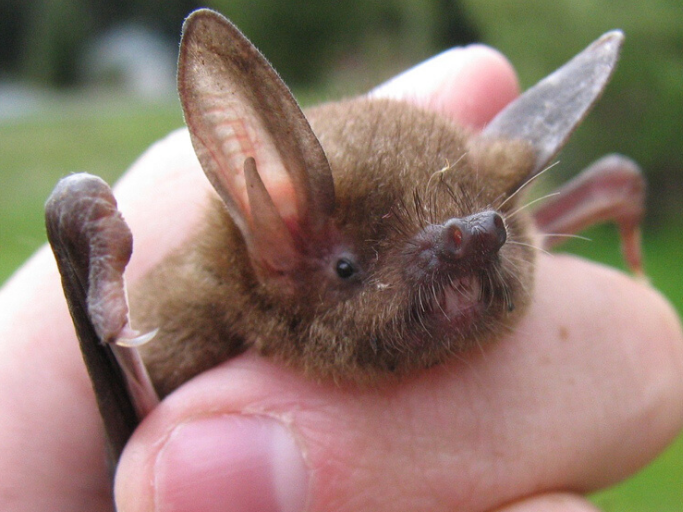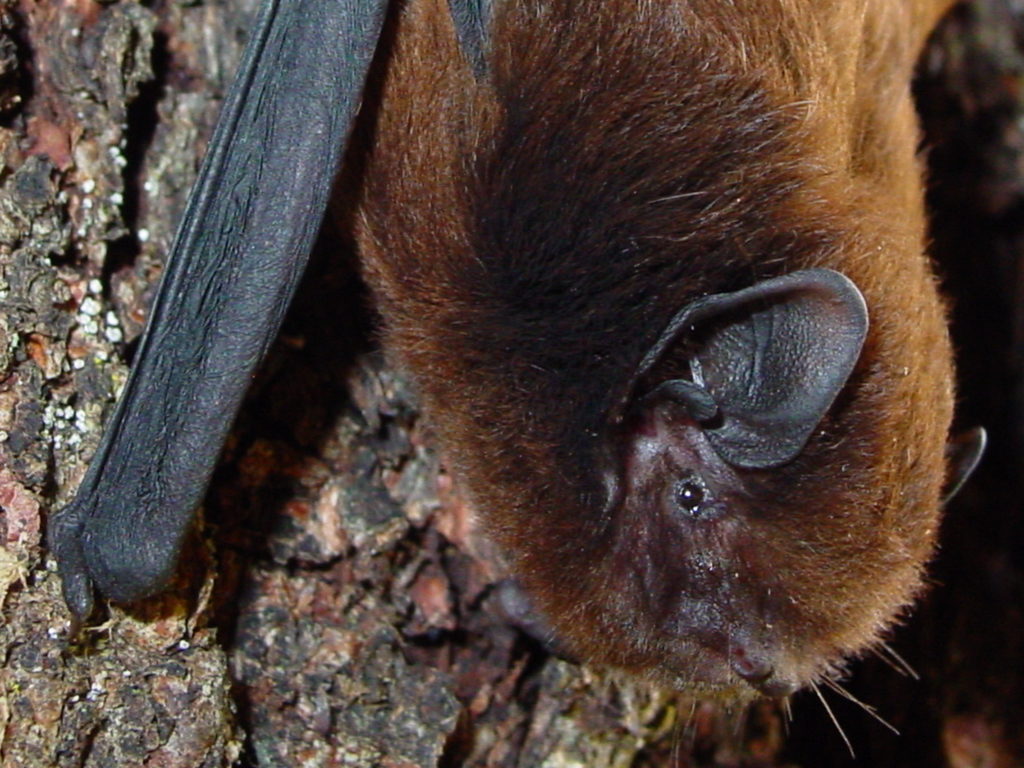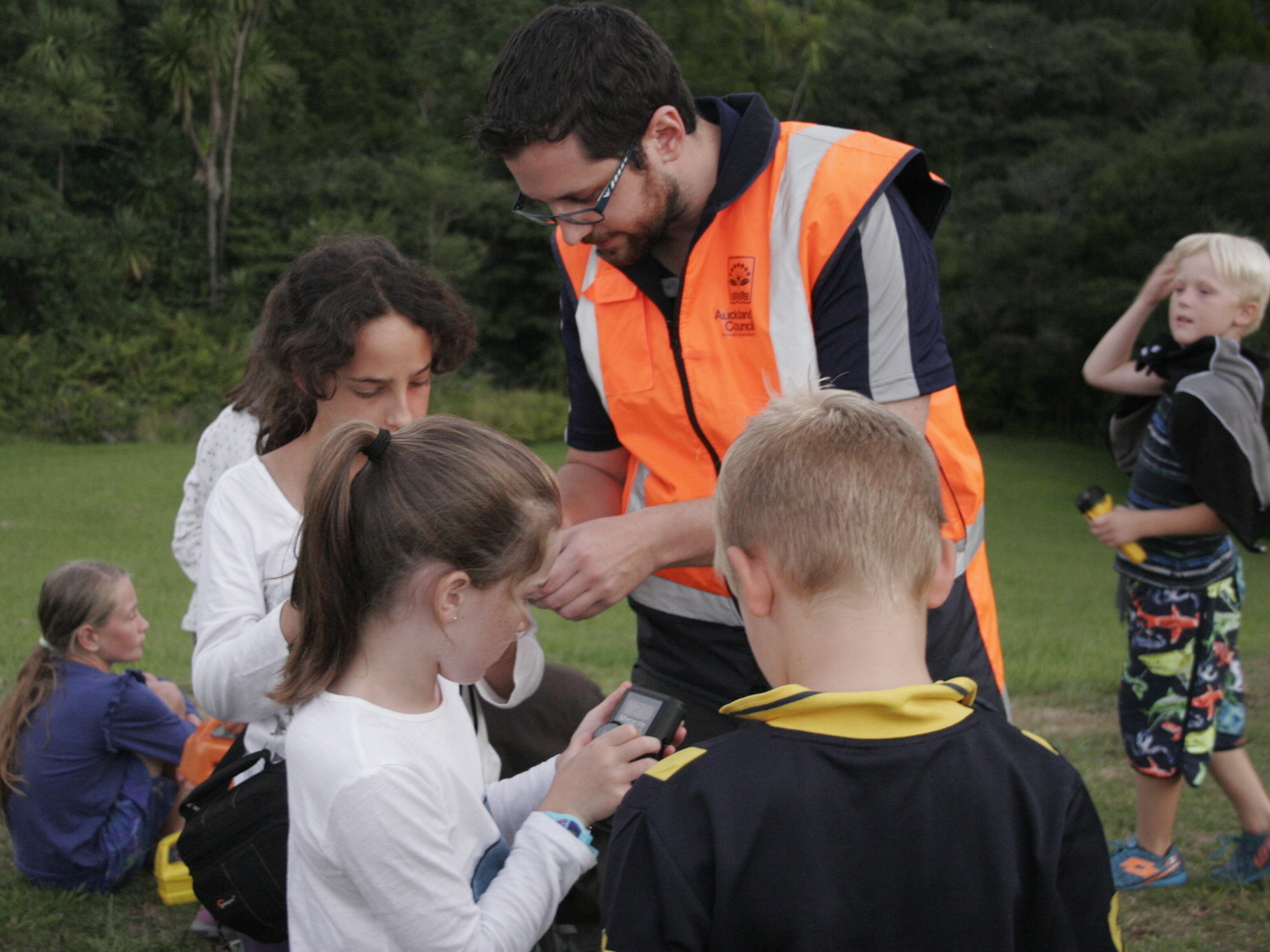ON THIS PAGE
Our bats
- Long-tailed bat: located throughout the mainland (including parts of Auckland, Hamilton and Rotorua) and on several offshore islands, e.g. Rakiura/Stewart Island and Kāpiti Island. Have large home ranges. Can be seen at dusk flying along bush or forest edges, e.g. Talbot Forest in Geraldine. Classed as ‘nationally critical’.
- Lesser short-tailed bat: an ancient species, found only in limited areas e.g. parts of Northland, Taranaki, and on Whenua Hou/Codfish Island in the south. Unusually for bats it spends a lot of its time ground-hunting on forest floors, making it vulnerable to predators. Subspecies are classed from ‘vulnerable’ to ‘recovering’.
- Greater short-tailed bat: once lived on two islands off Rakiura/Stewart Island, but the last confirmed sighting was more than 50 years ago and it is probably extinct.
According to DOC, both the long-tailed bat and lesser short-tailed bat are in danger of going extinct in the medium term if not enough is done to reverse their decline.
They are considered to be a conservation priority.
Threats to native bats/pekapeka include the logging of native forests and introduced predators (rats, stoats, cats).

Bat behaviour
- Favour open spaces and tend to nest in the hollows of mature trees (and dead trees) in forests, and in trees on the banks of ponds, rivers and streams (e.g. willows).
- Are found in native and non-native (e.g. pines, willow) trees and not always in remote places (e.g. bats have been found in urban reserves in Auckland).
- Are nocturnal and use echolocation to find food.
- Eat a lot of insects and feed at dawn and dusk.
- Are tiny, about the size of your thumb, and weigh, on average, just 8-13 grams.
- Produce, on average, just one offspring (pup) per year.
- Pollinate many plants on forest floors and in canopies.
- Are social, with 10-50 bats often feeding and roosting together.
- Are highly mobile (they can fly 60km per hour and travel more than 100km from roost sites).
- Roost for relatively short periods and can have more than one roost site at a time.
- Go into ‘torpors’ (a state close to hibernation, but not quite) during the colder months.
How to monitor bats

Bat surveying in New Zealand is relatively new, and many areas remain unsurveyed.
You can get involved whether you’re a farmer, a hiker, part of a community group or a casual backyard spotter.
As the short-tailed bat has very limited locations, the advice below relates to the long-tailed bat.
The question is, how do you monitor a rare, small, dark, highly mobile, nocturnal mammal?
Bat detectors
Modern technology makes it much easier to detect and monitor bats. For example, battery-powered bat detectors (small, black boxes that pick up high-frequency echolocation calls and convert them into sounds we can hear) are often used. They have a range of 20-30 metres and can be purchased online or potentially borrowed from your council.
Simple visual counts are also possible if you don’t have a bat detector. In bat-populated areas, stand under old trees at dusk, away from busy roads and ideally close to water, and look up to spot their silhouettes.
Other methods trained DOC staff use as part of their Bat Recovery Programme include trapping and tagging bats (sometimes with transponder microchips) to learn more about their population size, flight paths and feeding behaviour.
Other tips for effective bat spotting:
- You can monitor roost sites, non-roost sites, or both. (Non-roost sites are usually easier because the bats are flying out in the open, making them easier to detect.)
- If monitoring roosts, perform ‘exit counts’ (bats leaving the roost) with visual counts and video recorders. Ensure you don’t disturb any bats – it affects their behaviour and the accuracy of your count.
- Don’t shine bright lights on bats. Instead, use an infrared torch or put red cellophane over a regular torch.
- Bats are most active during warm, fine nights from October to March.
- Move slowly and carefully if counting bats out in the open (i.e., non-roost sites). Don’t bring dogs.
- You’ll be outside in the dark, so wear warm clothing, tread carefully, and make sure you familiarise yourself with the area during daylight hours first.

Where to share your data
If you’re in the Waikato region, get involved with Project Echo. Otherwise, contact your local council or DOC office.
Bring bats to your backyard
There are also ways you can attract bats to your property and take care of them.
- Plant native trees (bats favour rough-barked ones such as pūriri, tōtara and pukatea).
- Check any big old trees (including non-native ones and dead ones with hollows and holes) before you remove them.
- Place traps for predator species (rats, stoats).
- Avoid using pesticides in bat-populated areas.
- Install bat boxes – you can make your own. Place boxes as high as possible in trees, ideally 4-6m. Placing metal bands around trees deters climbing predators.

